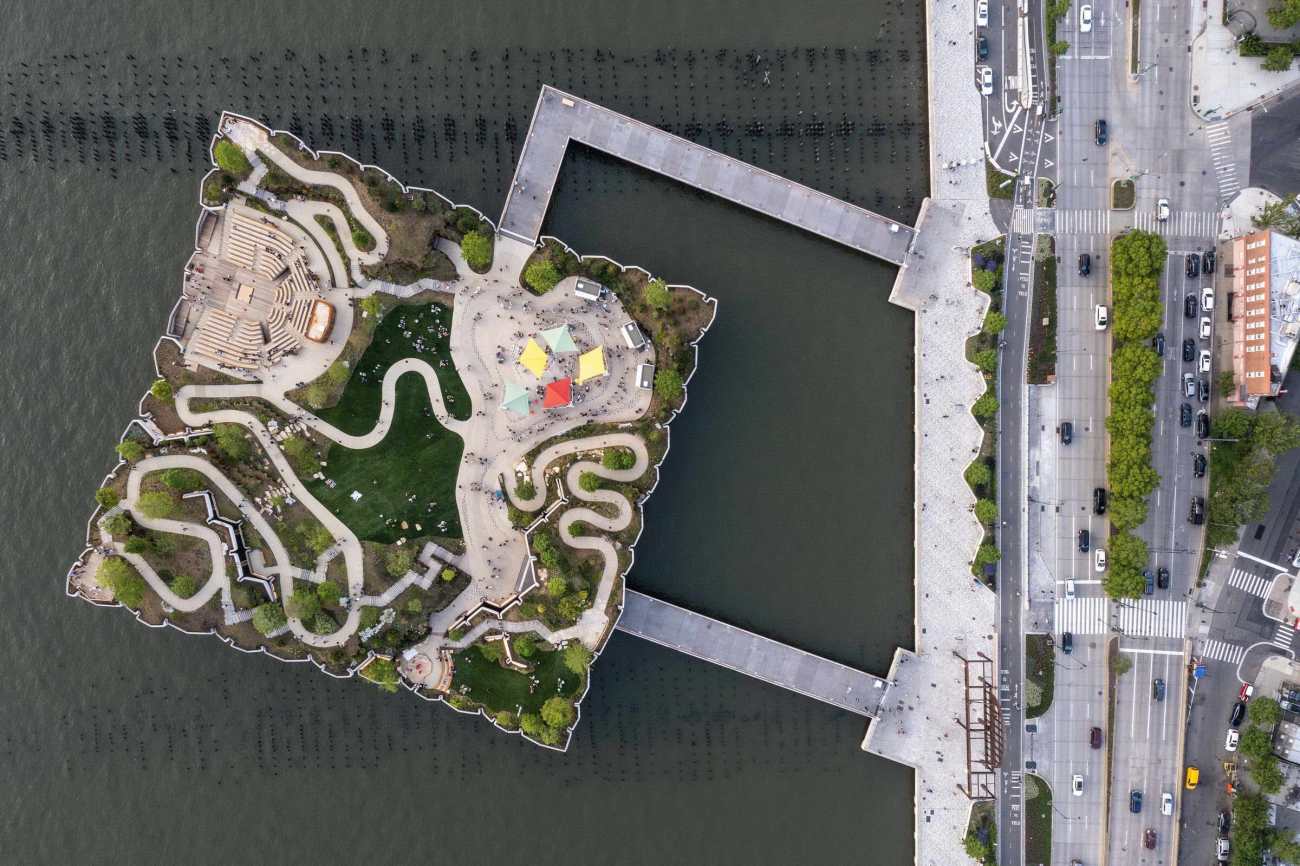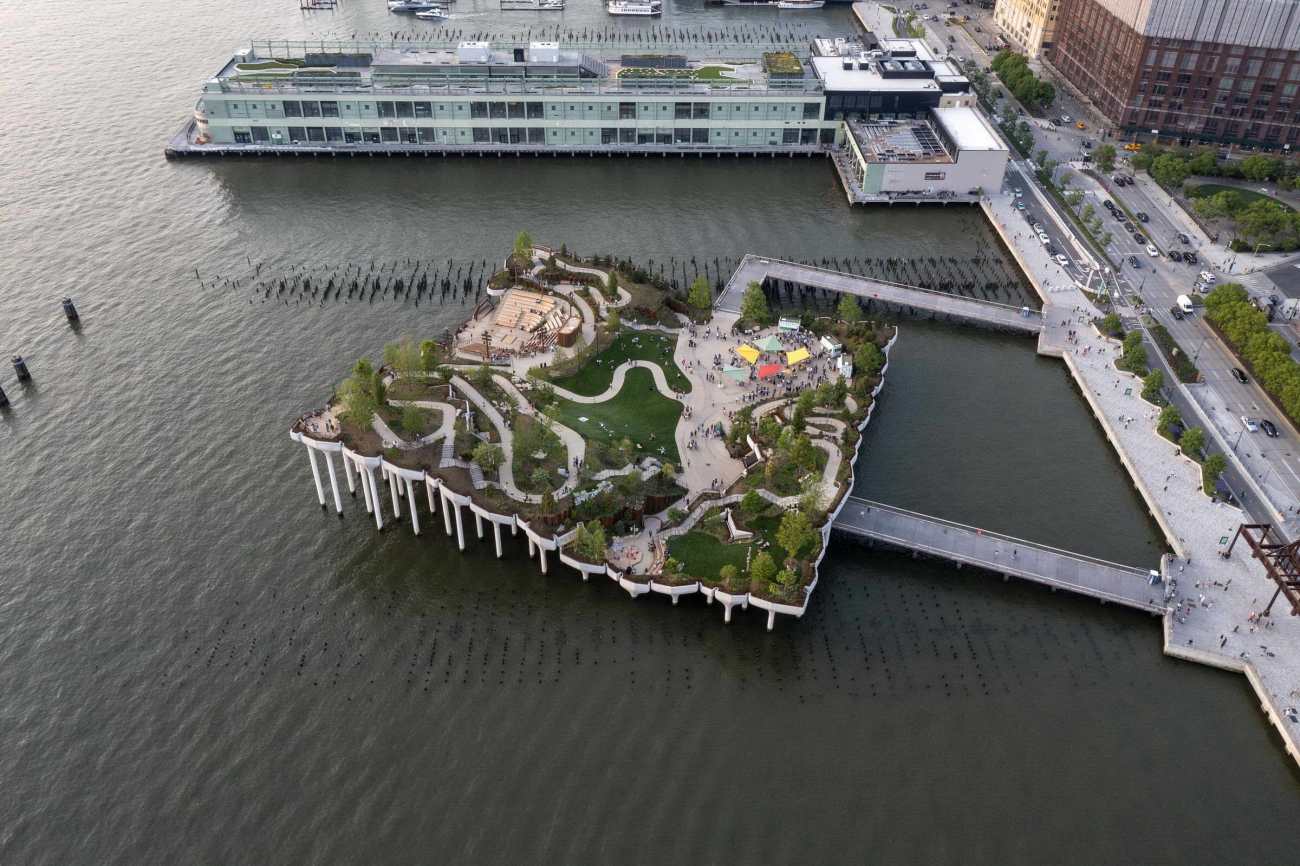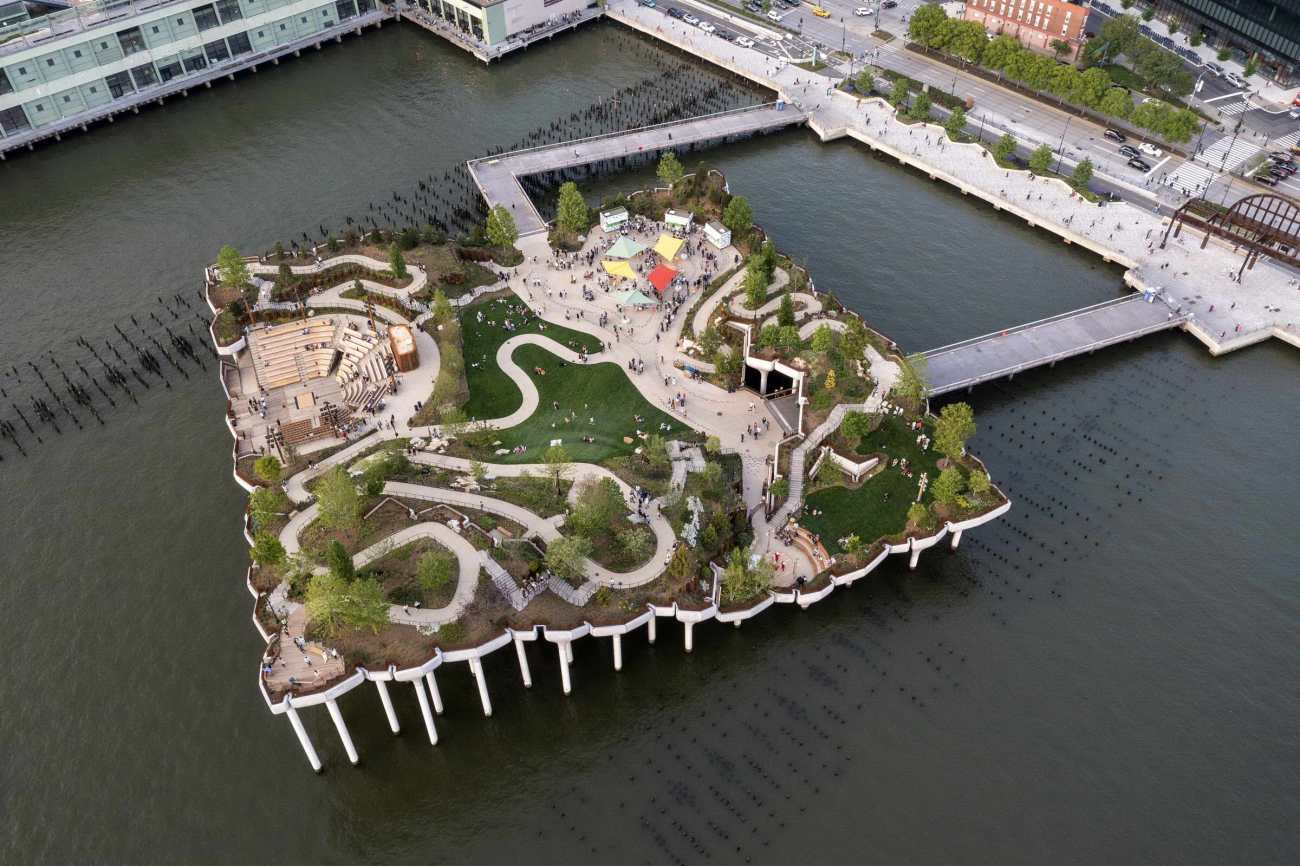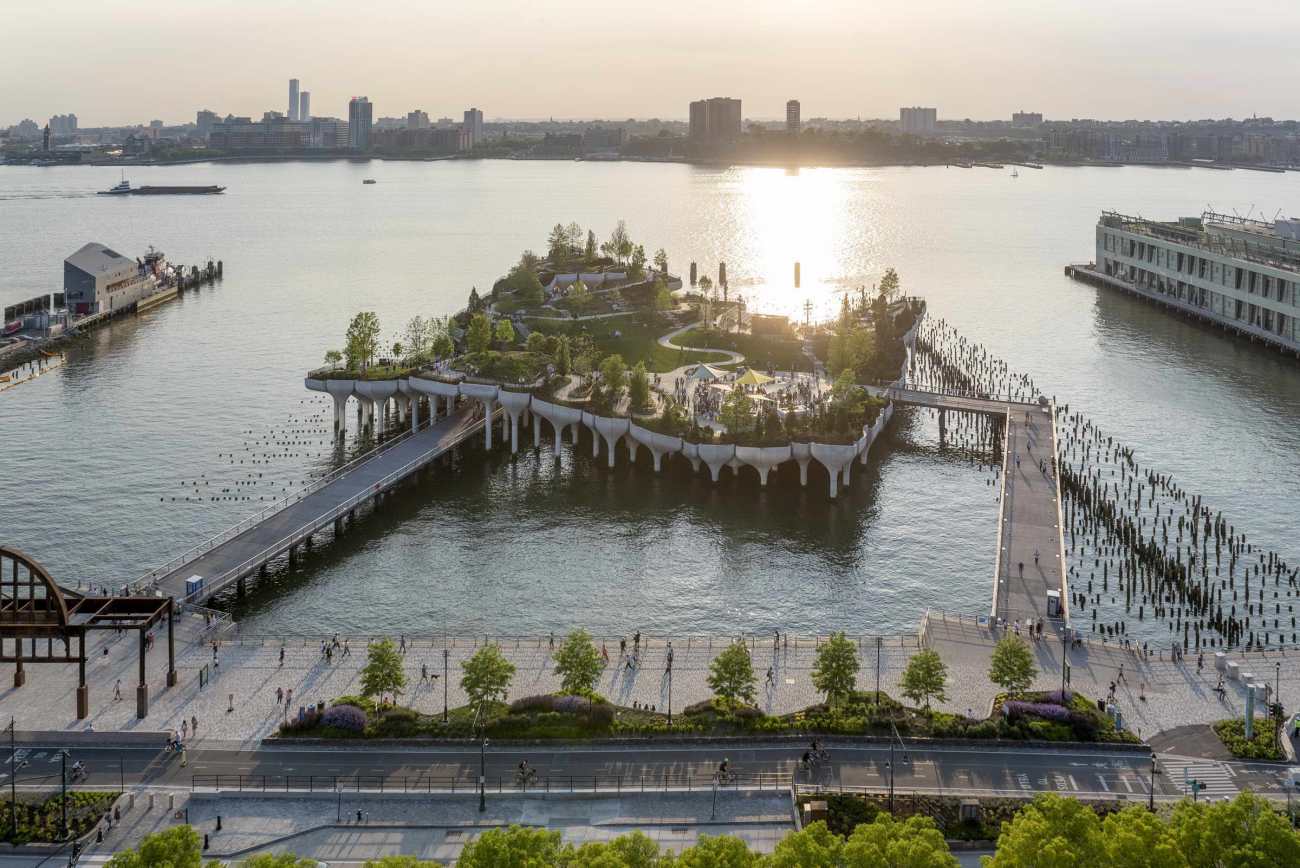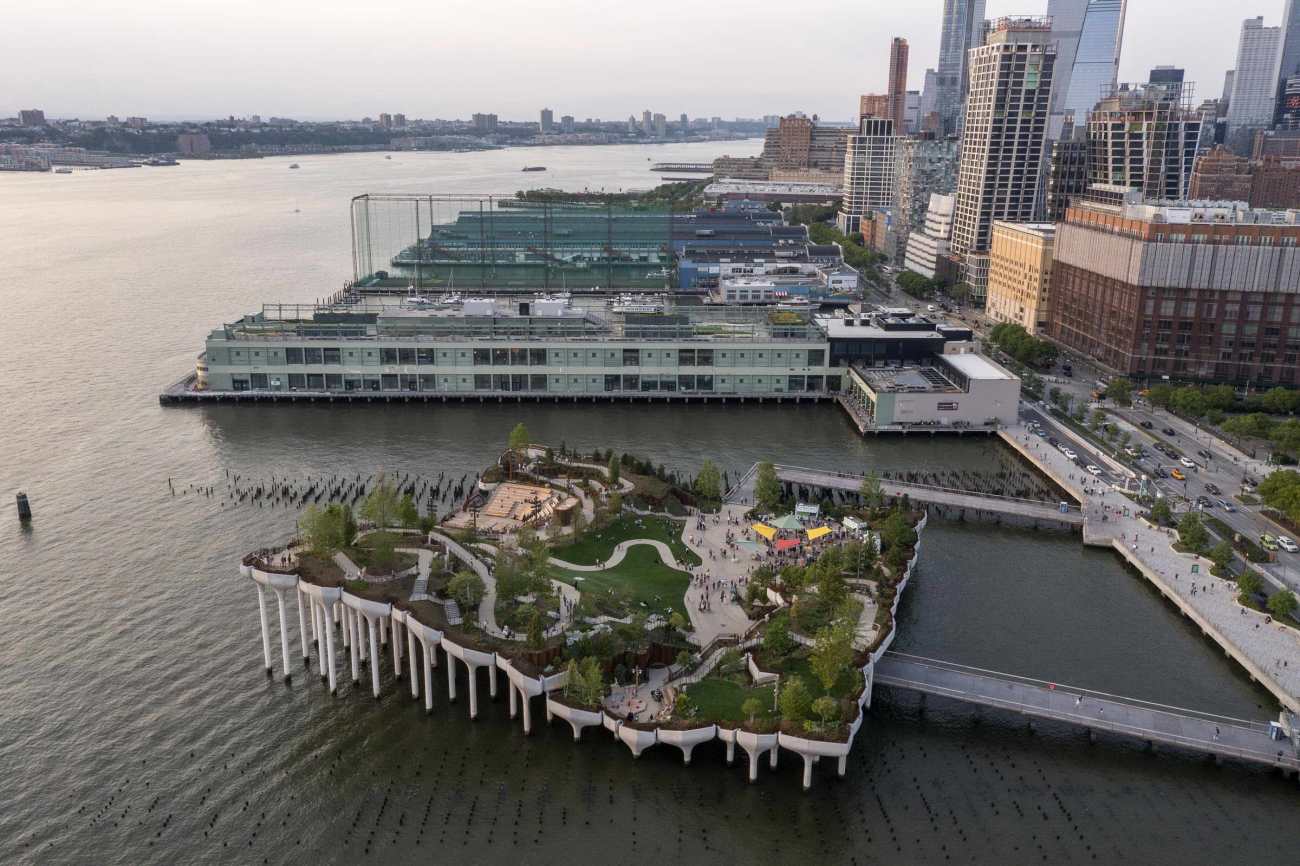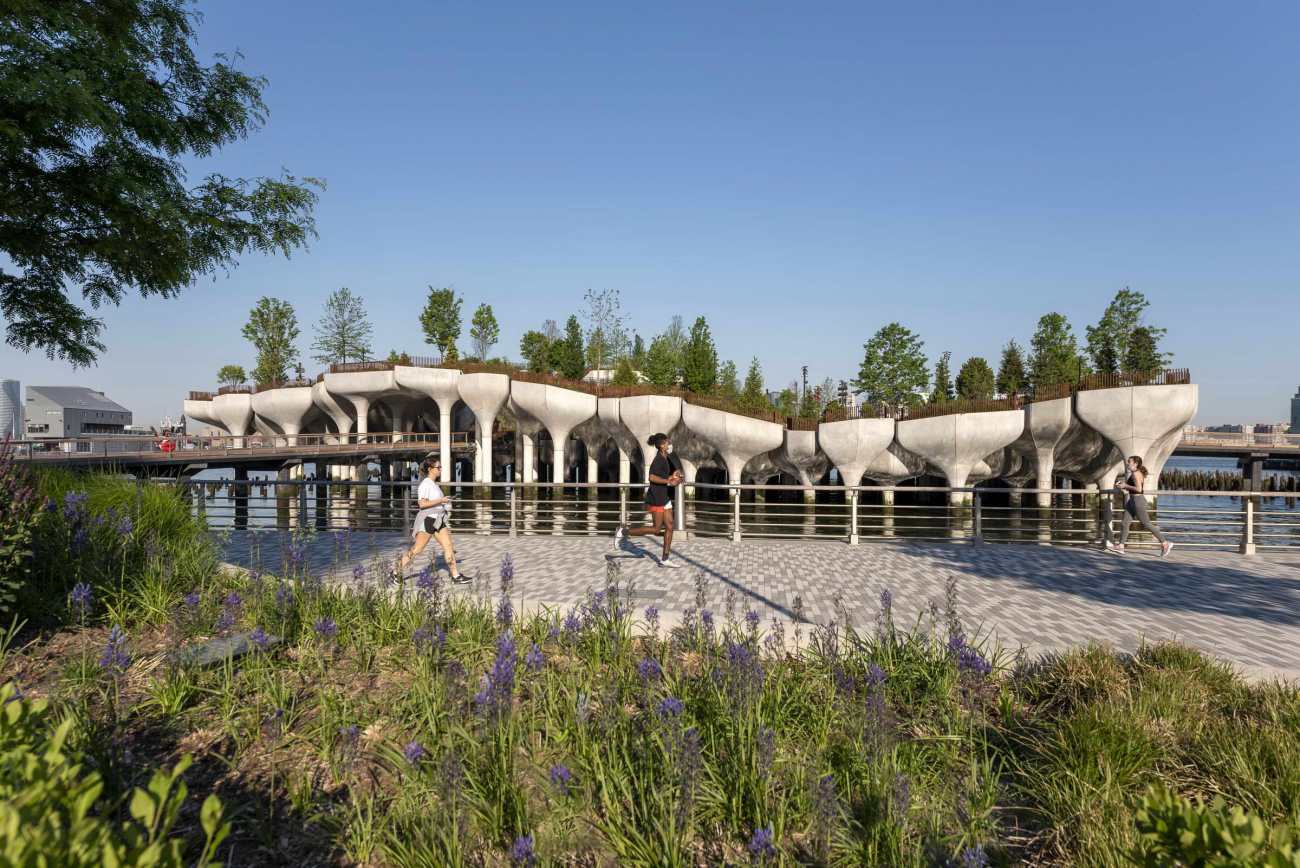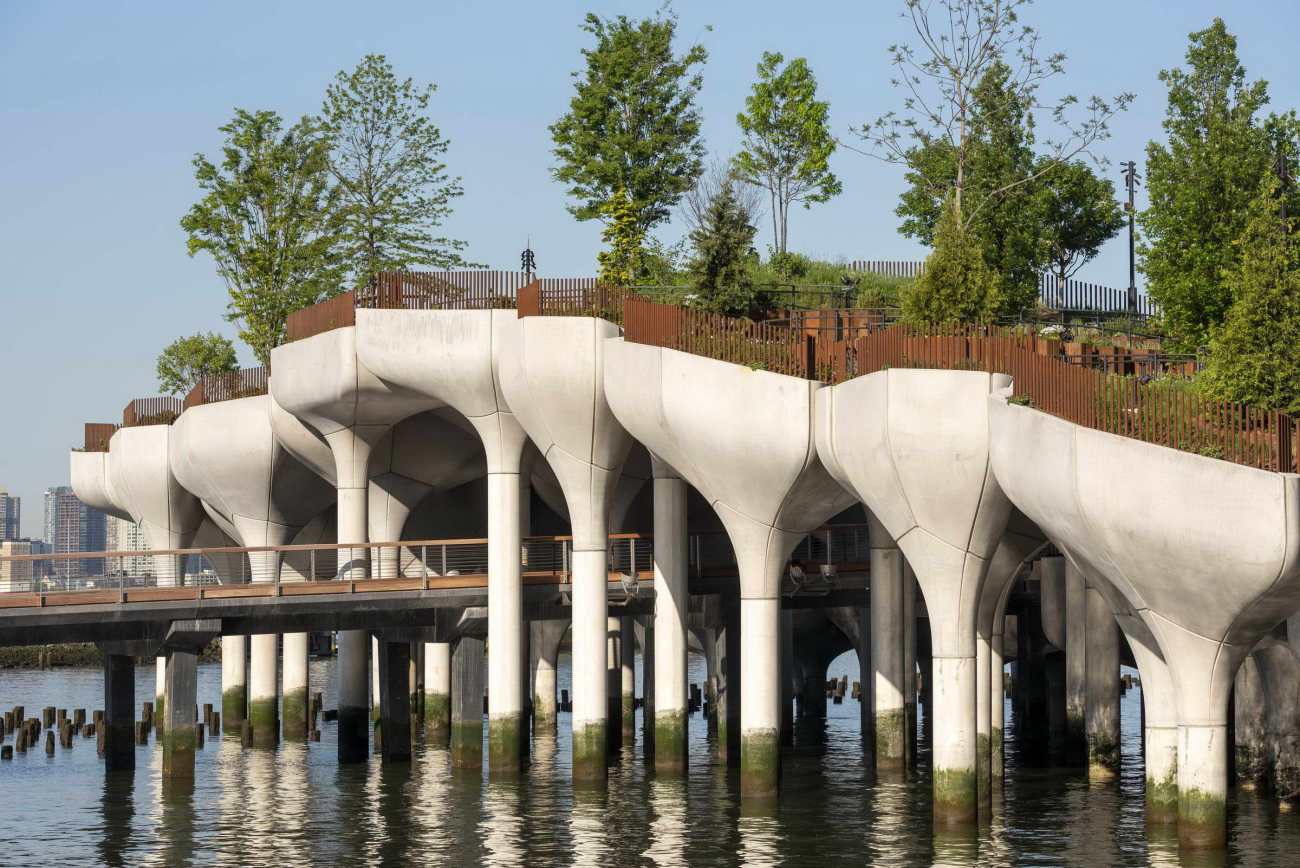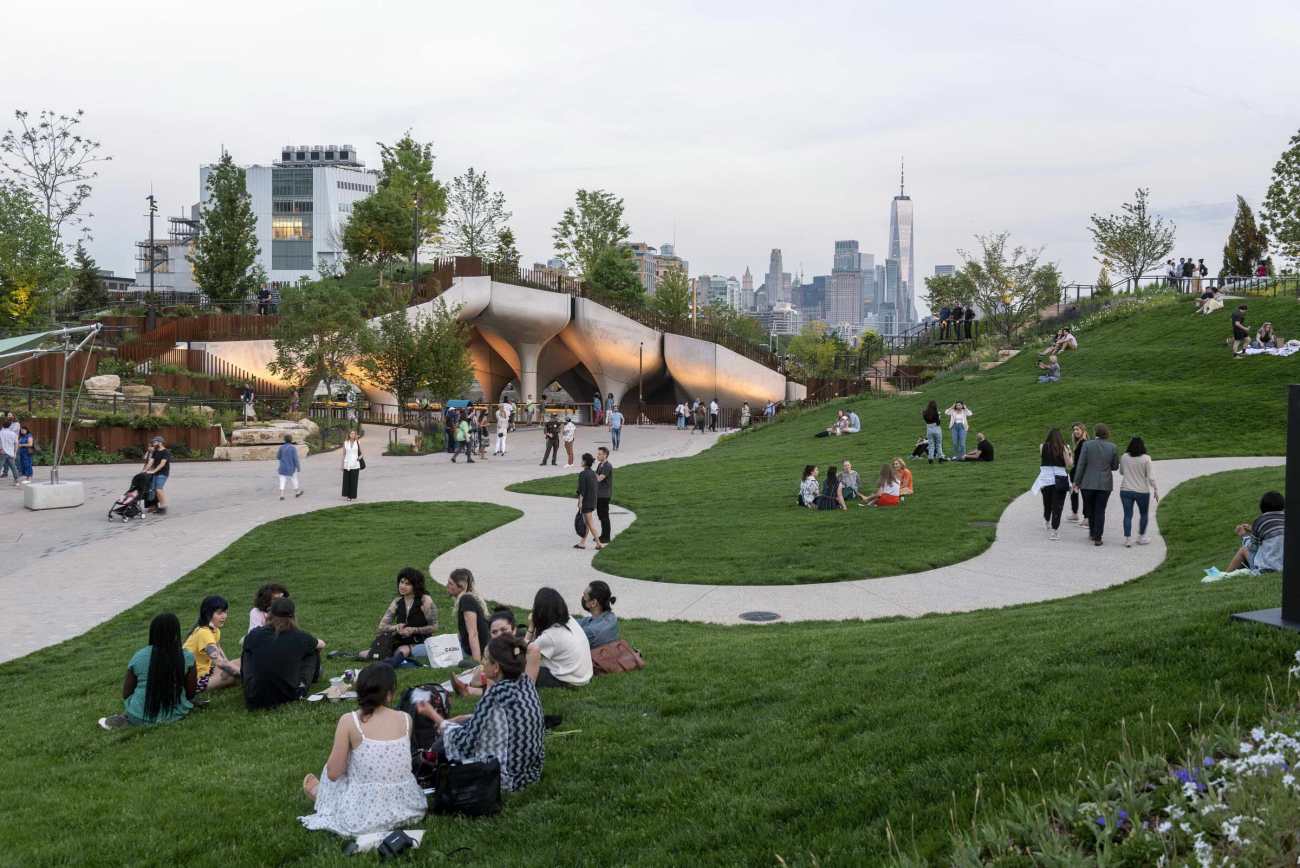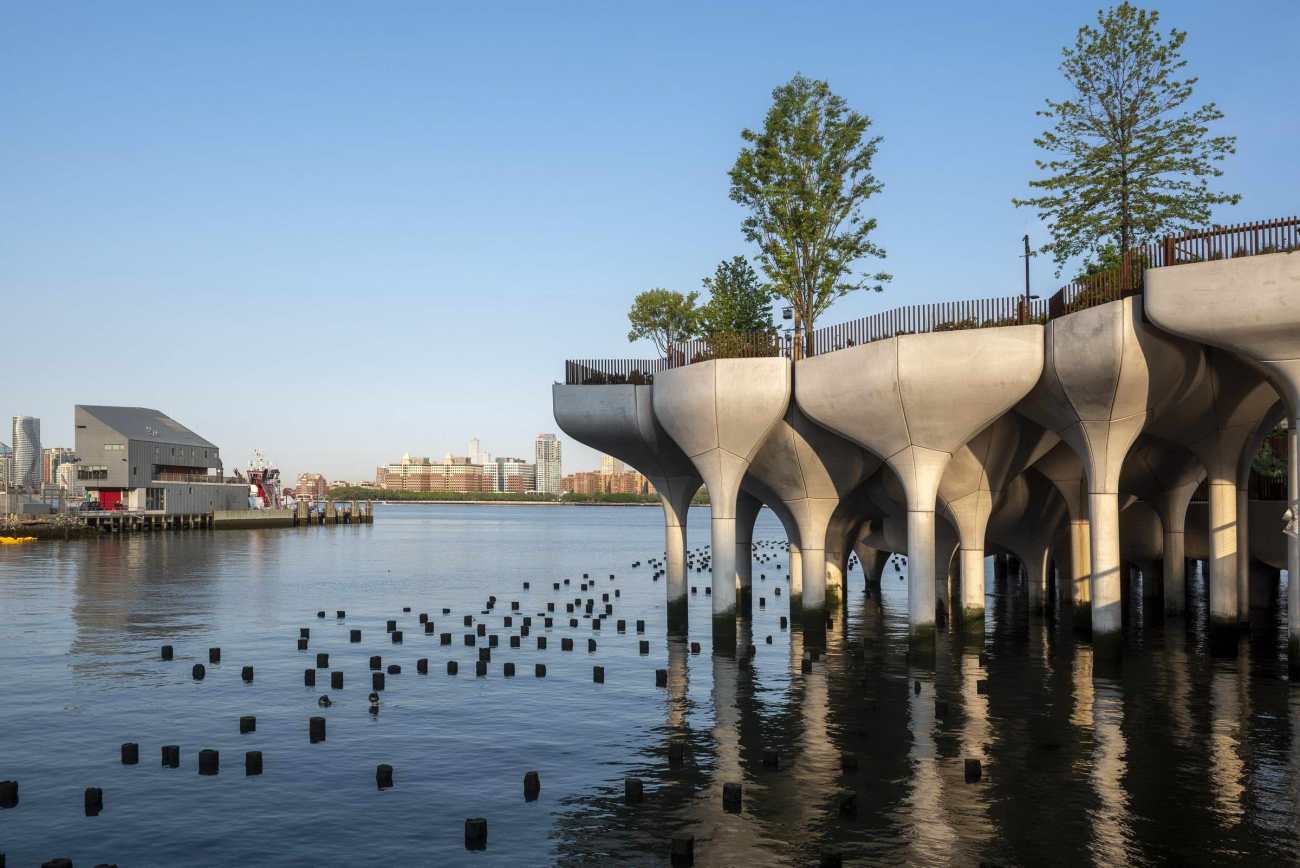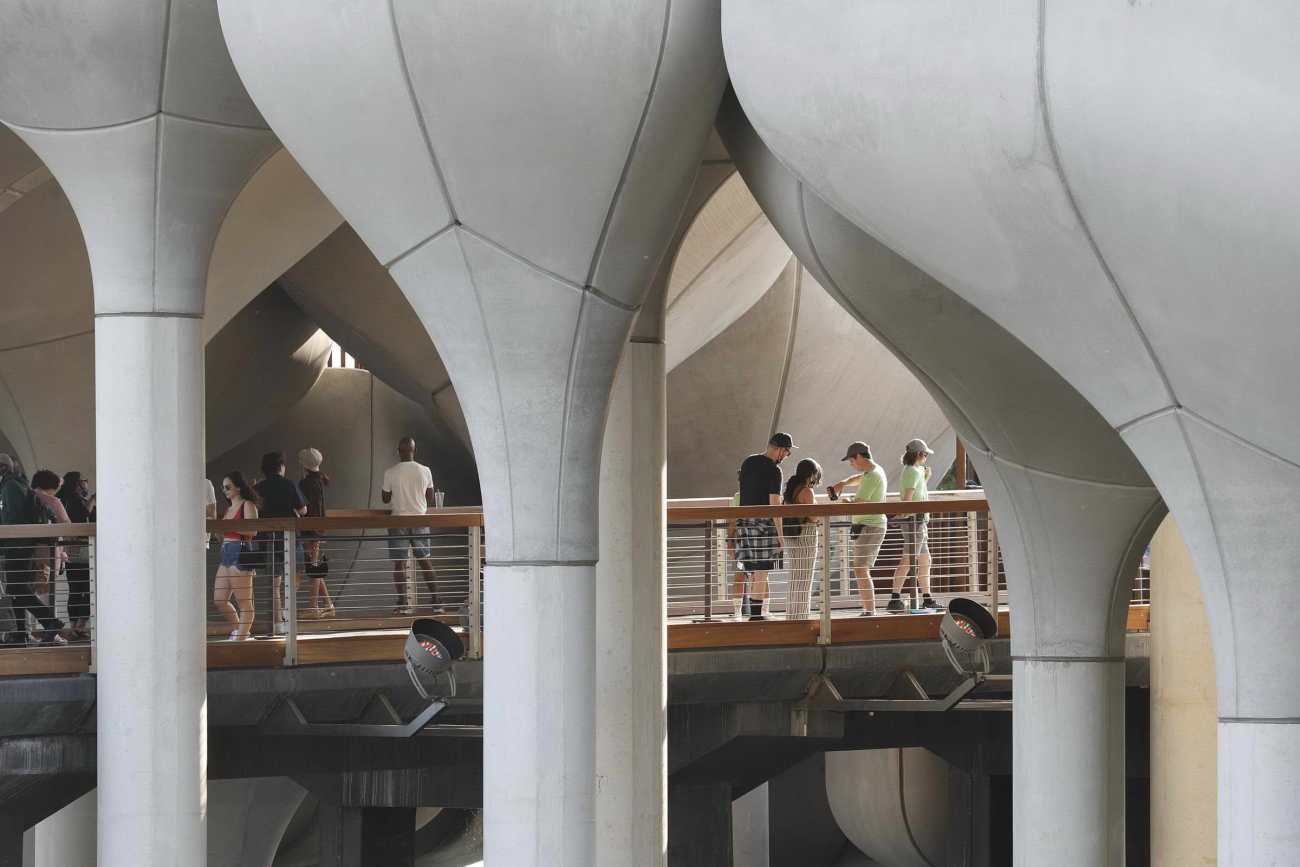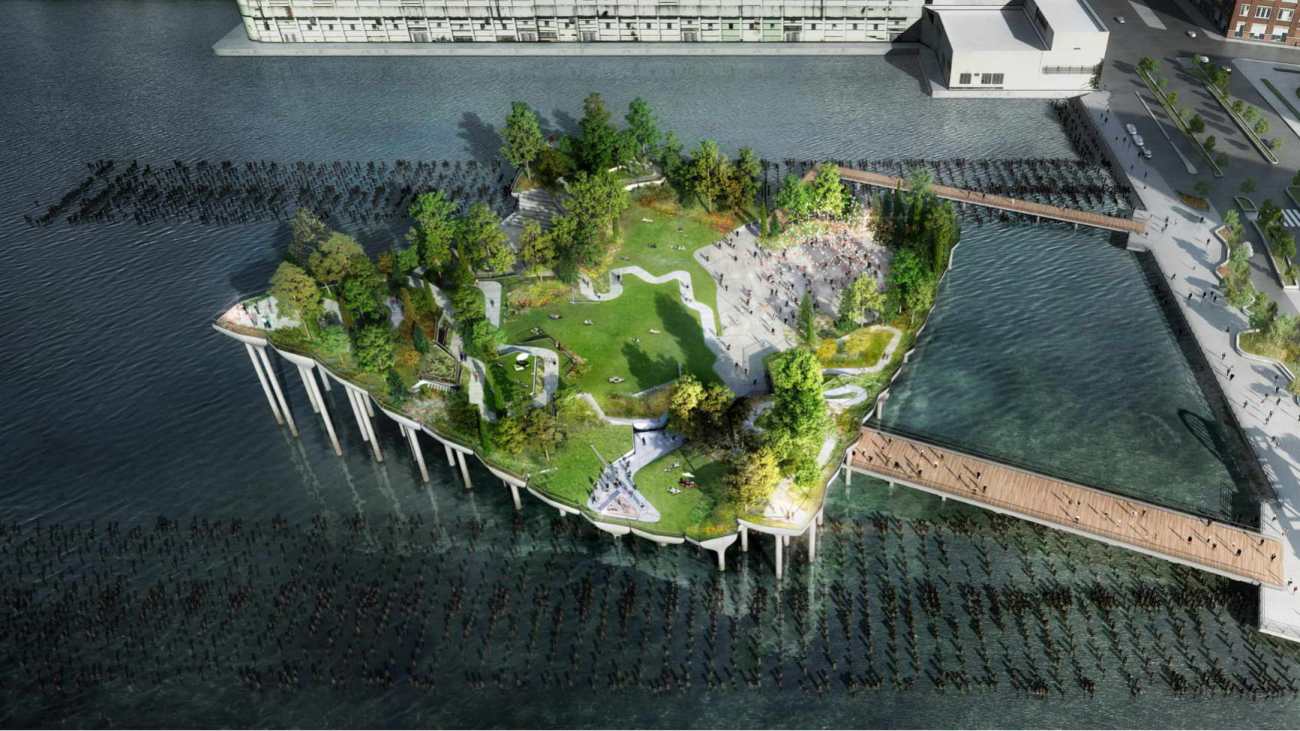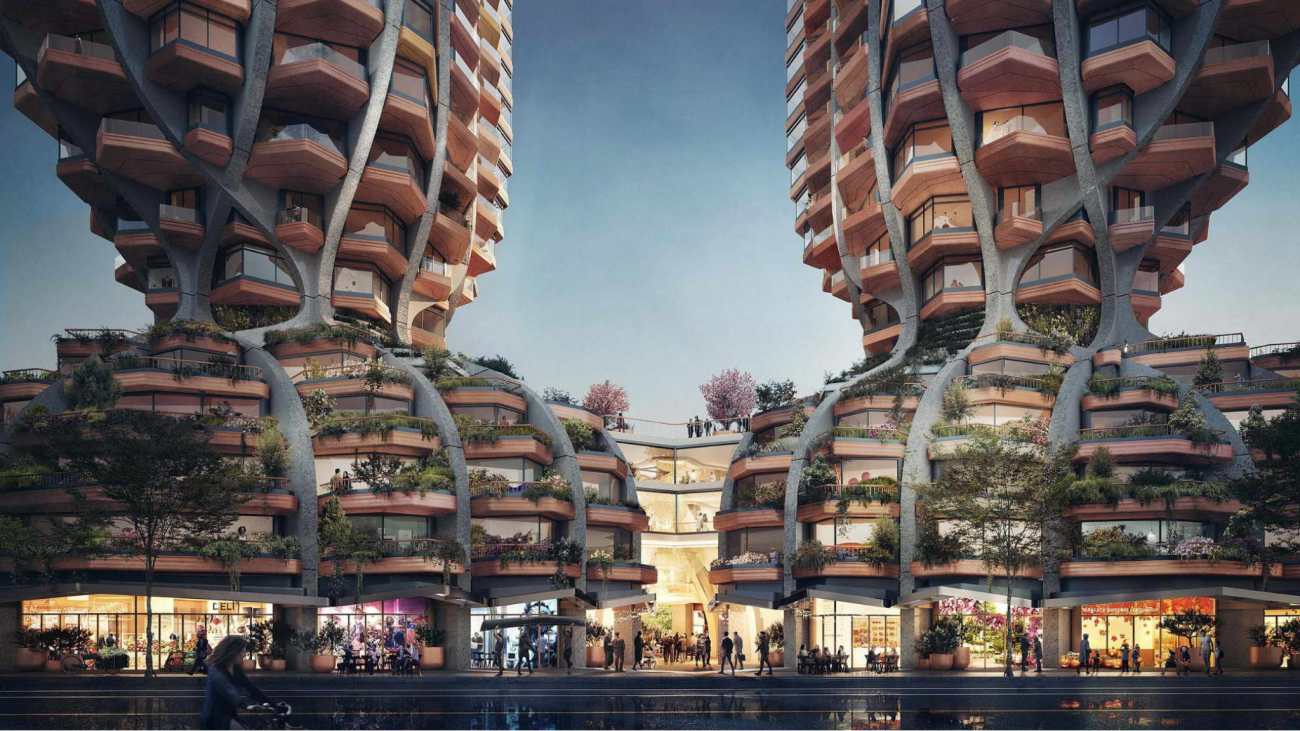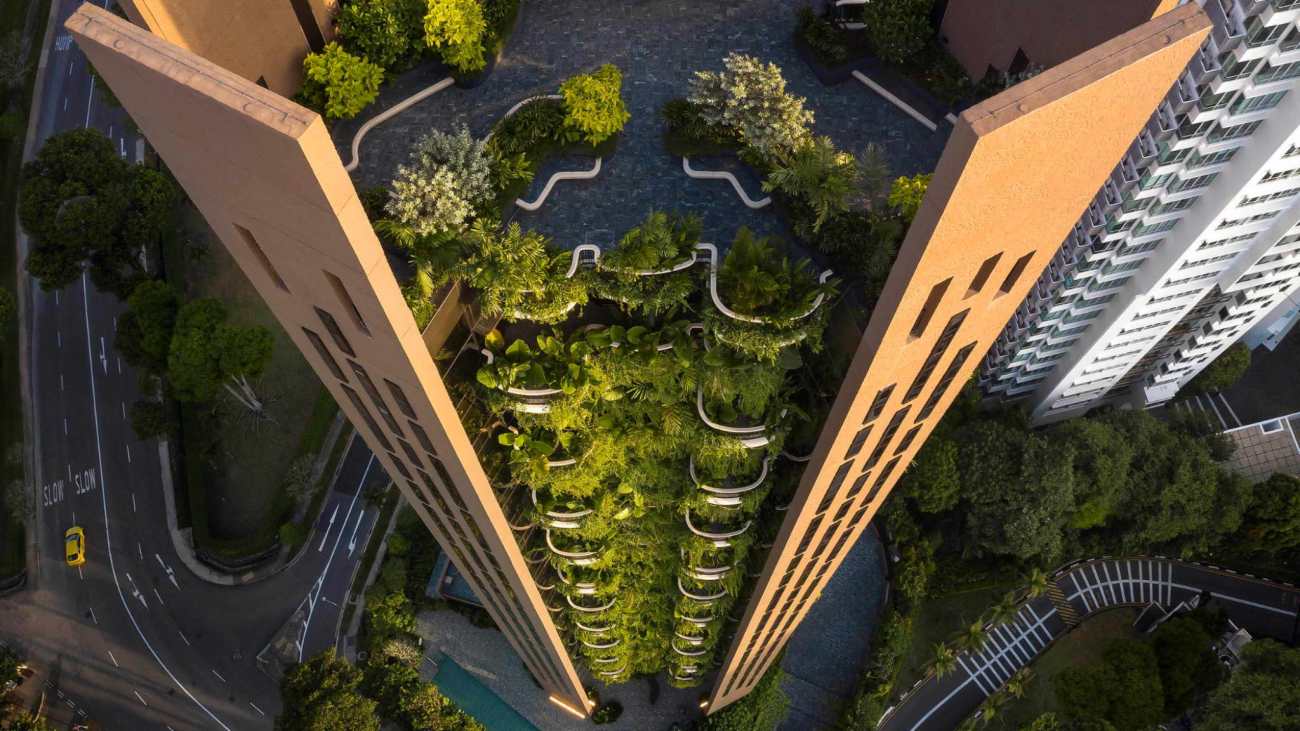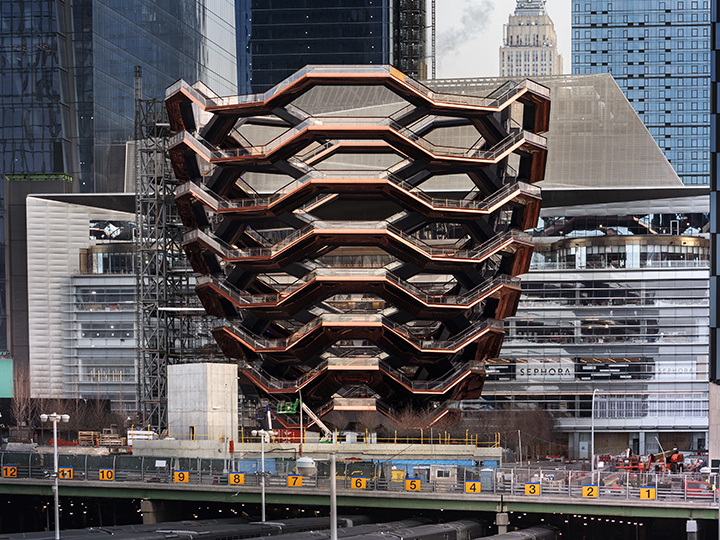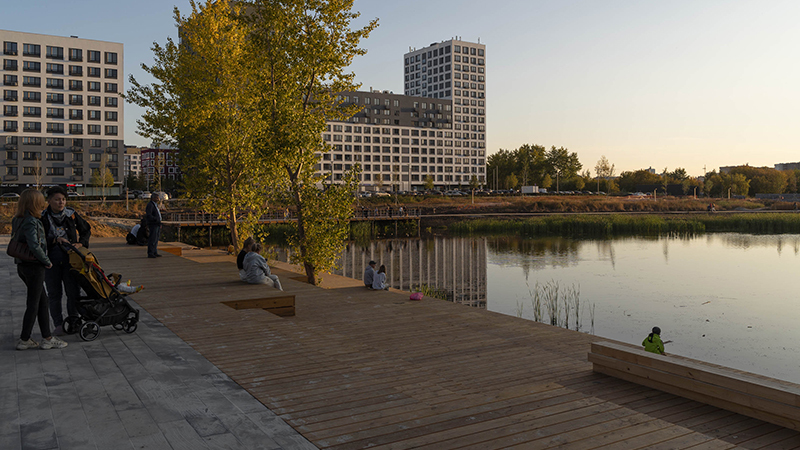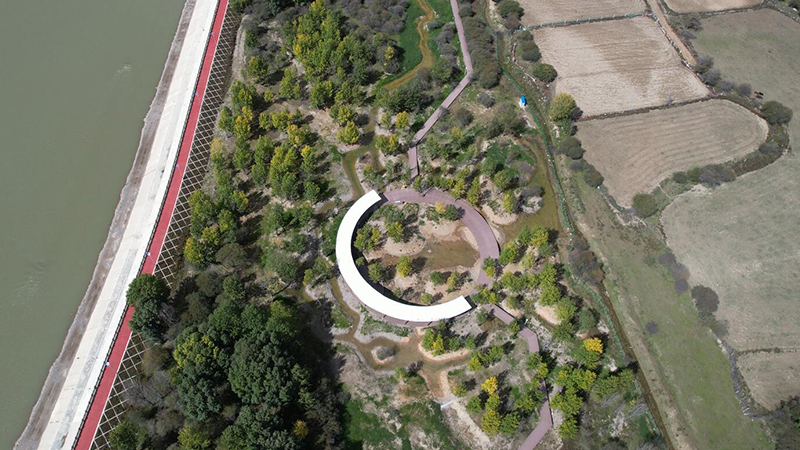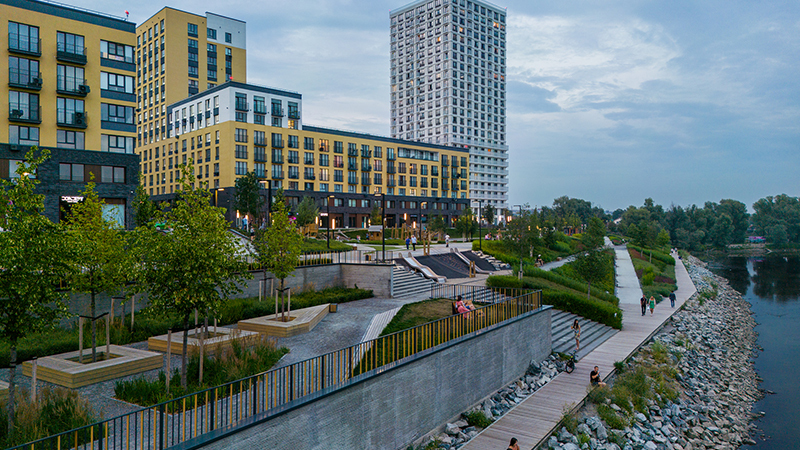| 公司: | Heatherwick Studio | 类型: | 景观 |
|---|---|---|---|
| 地区: | 美国 | 标签: | 滨水空间 | 公园绿地 |
Little Island是一个新的公共公园,庇护着哈德逊河上的三个新的表演场所。它被设计成人们和野生动物的天堂,是一个绿色的绿洲,由雕塑般的花盆支撑在水面上,从曼哈顿下西区穿过只需很短的步行时间。
Little Island is a new public park that shelters three new performance venues on the Hudson River. Designed as a haven for people and wildlife, it is a green oasis, held above the water by sculptural planters, and located just a short walk across a gangplank from Manhattan’s Lower West Side.
Heatherwick工作室最初是受慈善Barry Diller和哈德逊河公园信托基金的邀请,为曼哈顿西南边的一个新码头创造一个亭子。设计团队没有设计一个位于哈德逊河公园的装饰物,而是看到了一个机会,重新思考码头可以是什么。出发点不是结构,而是游客的体验:在水面上的兴奋以及离开城市并沉浸在绿色中的感觉。项目的灵感来自中央公园,在那里你有可能忘记你是在美国人口最稠密的城市中。
Heatherwick Studio was initially invited by philanthropist Barry Diller and the Hudson River Park Trust to create a pavilion for a new pier off the south-west of Manhattan. Instead of designing a decorative object to sit in the Hudson River Park, the design team saw an opportunity to rethink what a pier could be. The starting point was not the structure, but the experience for visitors: the excitement of being over the water, the feeling of leaving the city behind and being immersed in greenery – inspired by Central Park, where it’s possible to forget that you are in the midst of the most densely populated city in the United States.
码头在传统上是平坦的,以便于船只停靠,但它们必须是平坦的吗?与曼哈顿平坦的街道相比,设计团队希望为这个城市创造一个新的地形,它可以上升到塑造各种空间。第一个迭代方案是漂浮在水面上的卷曲的叶子,它的叶脉在边缘像肋骨一样上升,为空间遮风挡雨。在其基础上提升公园的想法来自于水中现有的木桩,这些木桩是过去从曼哈顿海岸线延伸出来的许多码头的遗迹。在可见的木头尖下,这些桩子已经成为海洋生物的重要栖息地,是鱼类的保护性繁殖地。
Piers were traditionally flat to allow boats to dock, but did they have to be? In contrast to the flat streets of Manhattan, the design team wanted to create a new topography for the city, which could rise up to shape a variety of spaces. The first iteration was a curled leaf form floating on the water, its veins rising like ribs at the edges to shelter the space from the wind. The idea of raising the park on its foundations came from the existing wooden piles in the water, remnants of the many piers that used to extend from the shoreline of Manhattan. Beneath the visible tips of the wood, the piles have become an important habitat for marine life and are a protected breeding ground for fish.
▼施工过程 Construction
 |  | 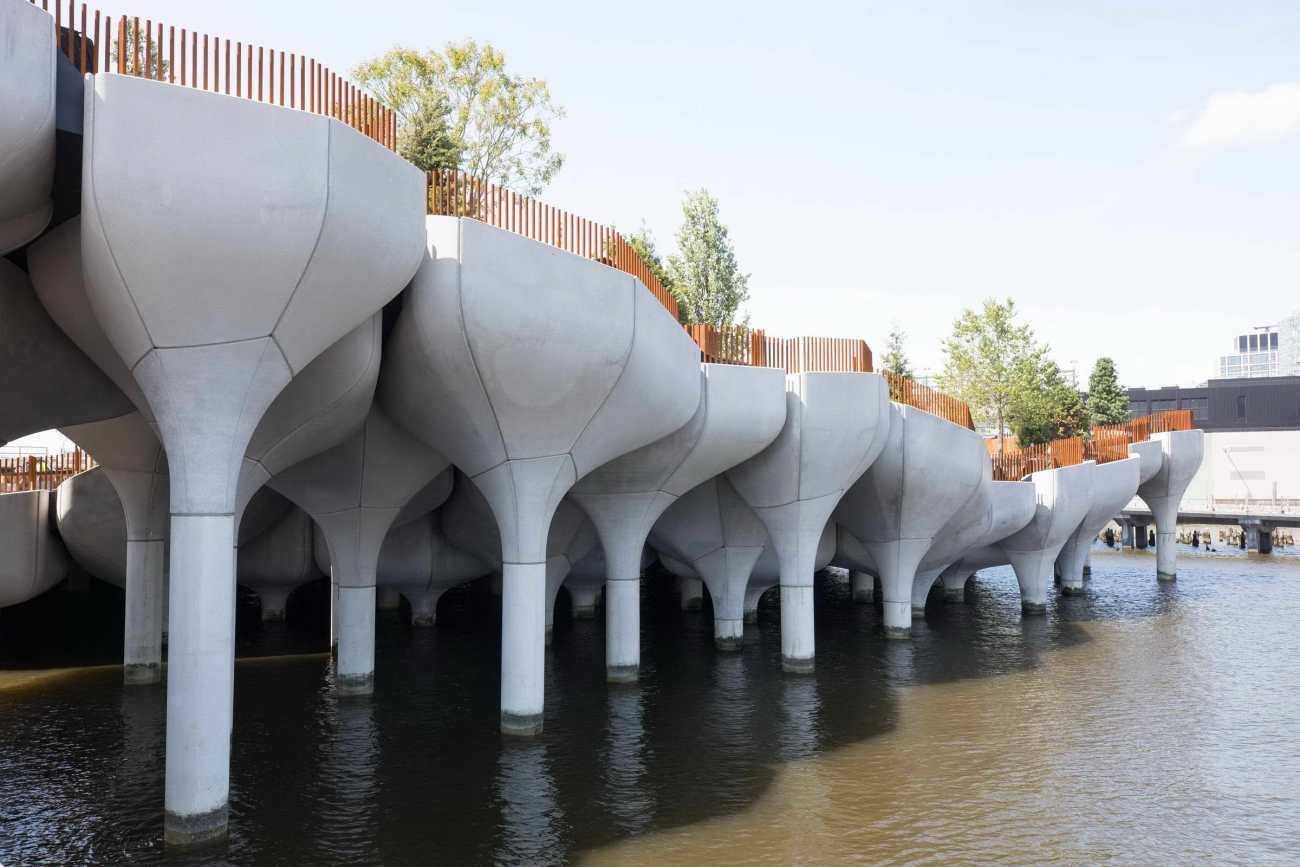 |
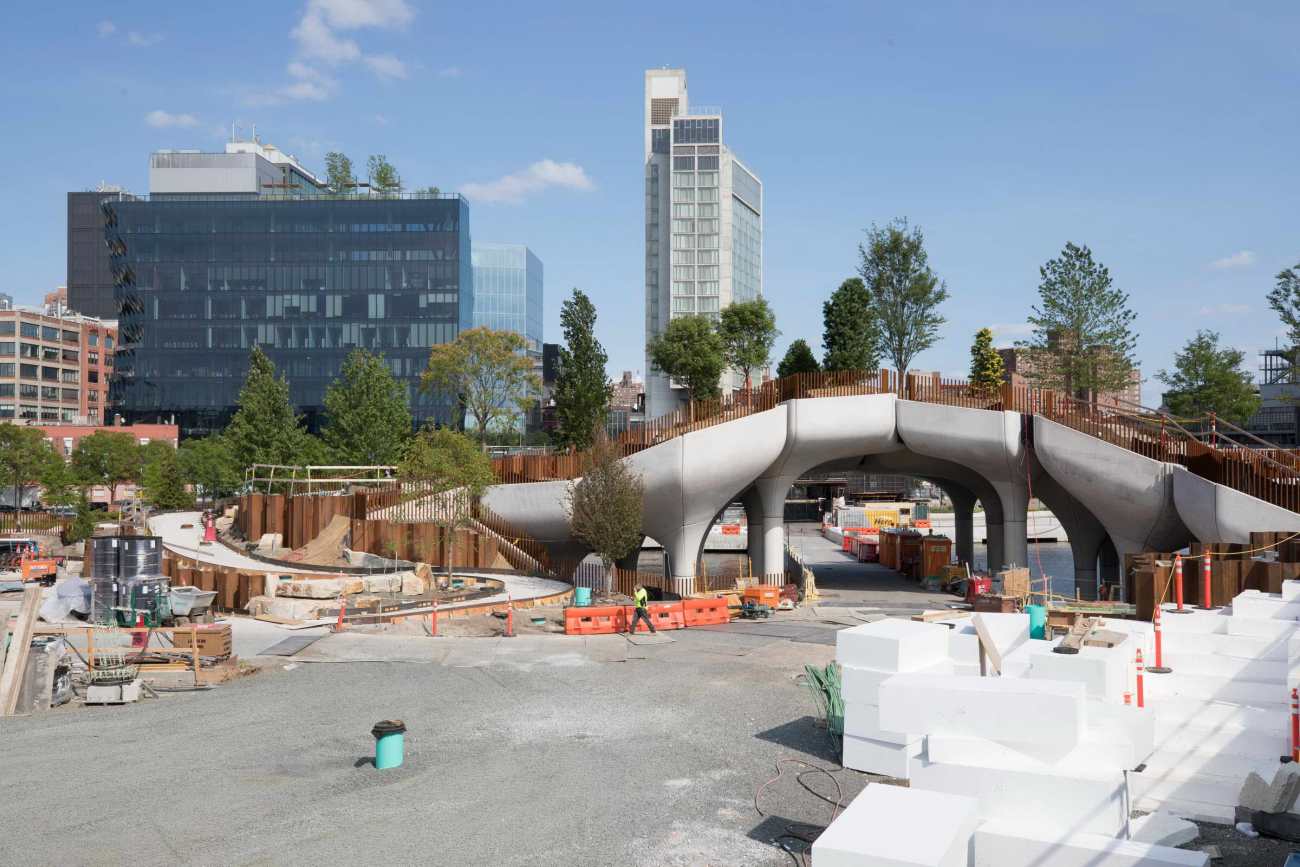 |  |  |
属于纽约的滨水表演空间
Heatherwick Studio将码头设想为一个完整的体验;一个单一的、有凝聚力的整体,而不是不相关的元素粘在一起。新的桩基对于支持任何类型的码头都是必要的,桩子不再是支撑甲板的固定结构,而是成为了平台,它们延伸到种植槽中,共同创造了公园的表面。桩子的高度是不同的,以创造公园的轮廓:码头的一角被抬起,使阳光能够照射到海洋栖息地,边缘下降,以确定山丘、观景点,并为表演开辟一个天然的圆形剧场。这样一来,码头和它的支撑结构就是一个整体。
A DYNAMIC PERFORMANCE SPACE FOR NEW YORK
Heatherwick Studio envisaged the pier as a complete experience; a single, cohesive object, rather than unrelated elements stuck together. New piles would be necessary to support any type of pier. Instead of sticks holding up a deck, the piles become the deck – they extend into planters that join together to create the park’s surface. The height of the piles varies to create the park’s contours: the corner of the pier is lifted to allow sunlight to reach the marine habitat, and the edge falls to define hills, viewpoints and to carve out a natural amphitheatre for performances. In this way, the pier and its supporting structure are one.
种植槽或 "花盆 "里装满了一百多种本地树木和植物,它们鼓励生物多样性,并能在纽约的气候中茁壮成长,项目的每个角落都代表了不同的微气候。为了确定花盆的形式,设计团队将目光投向了大自然,以及河水结冰时在木桩周围形成的冰。工作室将其重新诠释为一个方格图案,看起来是有机的,但使用重复的元素,可以标准化地制造。在周边最明显的地方,我们小心翼翼地改变花盆的角度和重复性。为了使混凝土结构具有光滑的触觉质量,Heatherwick Studio与当地的一个制造者密切合作,预制构件由船只运输并在现场组装,最大限度地减少了对城市的干扰。
The planters, or ‘pots’ are filled with more than a hundred different species of indigenous trees and plants, which encourage biodiversity and are able to thrive in New York’s climate – each corner of the island represents a different microclimate. To determine the pots’ form, the design team looked to nature, and the mosaic of ice that forms around the wooden piles when the river freezes. The studio reinterpreted this in a tessellated pattern that appears organic, but uses repeated elements that could be standardised for fabrication. Care was taken to vary the angle and repetition of pots at the perimeter, where they were most visible. To give the structural concrete a smooth, tactile quality, Heatherwick Studio worked closely with a local fabricator. The precast components were transported by boats and assembled on site, minimising disruption to the city.
为了强调像中央公园一样“避世”的氛围,项目的位于54号和56号码头之间的水面上,通过两个无障碍"跳板"进入,并以街道网格的延续为导向。在里面,小路蜿蜒穿过树木和草丛中的座位区,可以看到隐藏的、意想不到的景色。恢复了54号码头年久失修后失去的娱乐场所,公园整合了三个表演空间。在最远的边缘,在山丘和周围树木的庇护下,是一个经过声学优化的700个座位的露天剧场,有天然的石头座位,其舞台的背景是哈德逊河的日落和自由女神像的壮观景色。南面是一个更亲密的、有200个座位的舞台。中央是一个灵活的场地,它的硬质铺装使桩基的棋盘格局浮现出来,可以举办更大规模的活动。
To emphasise the feeling of escape, Little Island’s footprint sits in the middle of the water between piers 54 and 56. Access is via two accessible ‘gangplanks’, and oriented in a continuation of the street grid. Inside, paths wind through trees and grassy seating areas to hidden, unexpected views. Restoring the entertainment venue that was lost when Pier 54 fell into disrepair, the park integrates three performance spaces. On the furthest edge, sheltered by the hills and surrounding trees, is an acoustically-optimised 700-seat amphitheatre with natural stone seating – its stage is set against the spectacular backdrop of sunset over the Hudson River and views of the Statue of Liberty. To the south is a more intimate, 200-seat spoken word stage. In the centre is a flexible venue with capacity for larger scale events – its hard paving brings to the surface the tessellated pattern of the piles.
整个项目大约有400种不同的树木、灌木、草和多年生植物,通过公园至少有100种适合纽约气候的不同树种。岛上的每一个角落都代表着不同的小气候,这取决于地形、阳光照射和风向模式。There are roughly 400 different species of trees, shrubs, grasses and perennials throughout Little Island and at least 100 different species of trees through the park that are suited to the New York climate. Each corner of the island represents a different microclimate depending on the topography, sun exposure and wind patterns.
 |  |
剧院需要后场空间,但设计团队不想用建筑打断整个公园的统一性。解决方案是通过结构来实现的:最高的桩将负荷转移到较低的桩上,允许在平台下创造一个台地。在这个地下空间中,地基显露出来,在水面上建立了一个观景平台,使人们可以从独特的角度来观察码头和河流,同时将后场需要的设施隐藏在一个空隙里。从绿色植物在接近时的展开方式到每个剧院座位上的景色,人们体验的每一个方面都被考虑到了。项目拥有独特的场地和公园组合,是曼哈顿节奏中的一个暂停点;在这里,纽约人和游客可以穿过河流,躺在树下,观看表演,赶上日落,感受与水和自然世界的联系。
The theatre needed back-of-house spaces, but the design team didn’t want to interrupt the park with a building. The solution came through the structure: the tallest piles transfer the load to lower piles, allowing a void to be created beneath the deck. In this undercroft, the foundations are revealed and a viewing platform is created above the water, allowing a unique perspective of the pier and river, while concealing the facilities on a discreet deck. Every aspect of the experience has been considered, from the way the greenery unfolds on the approach to the view from each theatre seat. With its unique mix of venues and parkland, Little Island is a pause in the pace of Manhattan; a place where New Yorkers and visitors can cross the river to lie under a tree, watch a performance, catch the sunset and feel connected to the water and natural world.
Project Name: Little Island
Location: New York, USA
Completion date: May 2021
Area: 11,000 sqm
Design Firm: Heatherwick Studio
Design Director: Thomas Heatherwick
Group Leader: Mat Cash
Project Leader: Paul Westwood, Neil Hubbard
Technical Design Leader: Nick Ling
Project team: Sofia Amodio, Simona Auteri, MarkBurrows, Jorge Xavier Méndez-Cáceres, John Cruwys, Antoine van Erp, Alex Flood, Michal Gryko, Ben Holmes, Ben Jacobs, Francis McCloskey, Stepan Martinovsky, Simon Ng, Wojtek Nowak, Giovanni Parodi, Enrique Pujana, Akari Takebayashi, Ondrej Tichý, Ahira Sanjeet, Charles Wu, Meera Yadave
Making team: Jordan Bailiff, Einar Blixhavn, Darragh Casey, Hayley Henry, Hannah Parker, Luke Plumbley, Jeff Powers
Client: Hudson River Park Trust (HRPT) & Pier 55 Project Fund (P55P)
Main Contractor: Hunter Roberts Construction Group
Structural Engineer: Arup
Landscape Design: MNLA
Executive Architects: Standard Architects
Mechanical Engineering: Arup
Marine Engineers: MRCE
Cost Consultant: Gardiner & Theobald
Photo Credit: Timothy Schenck, Getty Images, Michael Grimm Photography, Max Guliani
更新日期:2021-05-27 14:43:57
非常感谢 Heatherwick Studio 带来的精彩项目, 查阅更多Appreciations towards Heatherwick Studio for sharing wonderful work on hhlloo. Click to see more works!
